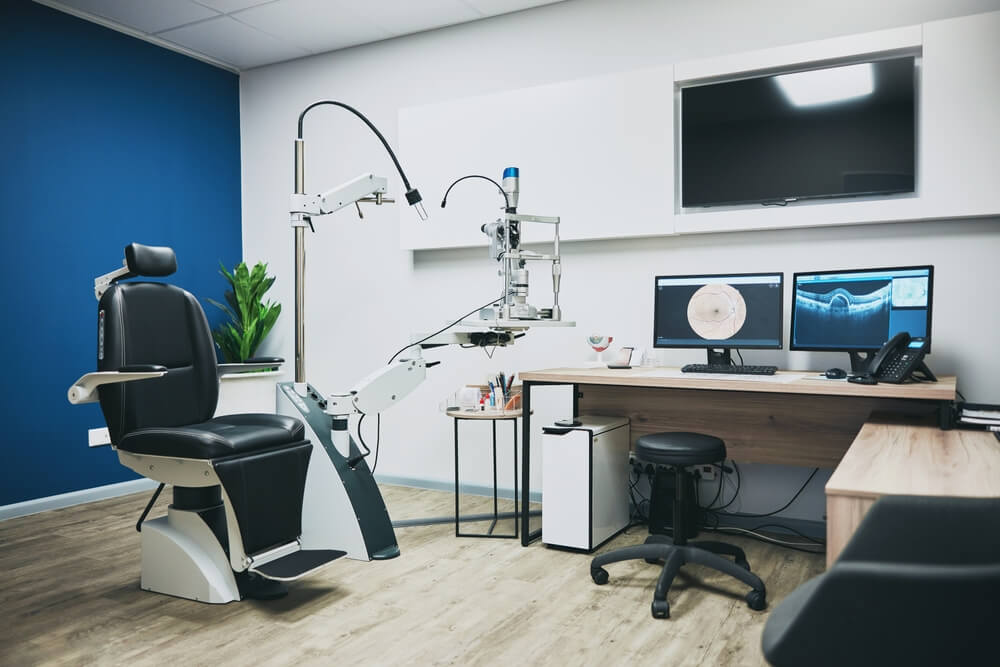
Boost Website Traffic With a Custom Optometry Website Design
Search engines are a business’s primary source of online traffic. They almost always are the method that leads a customer to your website. As an optometrist, your best option for boosting traffic is optometry website development with top search engine optimization (SEO) and user experience (UX).
Here are seven tips you can use to grow your website traffic through website design:
- Pick a simple website design.
- Make site navigation intuitive.
- Use responsive web design.
- Produce engaging content and visuals.
- Build pages for voice search.
- Highlight your achievements.
- Get reviews and comments.
There’s a lot to discuss, so get ready to take notes.
Let’s go!
To learn how Digital Authority Partners can create a standout website for you, watch this video!
7 Design Tips To Boost Traffic to Your Optometry Website

Although optimizing your website for traffic before its launch is always best, making changes after the fact is a step in the right direction. What counts is that you maximize your website to its full potential, including applying principles of optometry SEO to build trust in your brand.
For instance, how awful would it be if your optometry website had poor contrast between text and background? It would make the website unusable for some people, including the elderly and those with colorblindness. These are problems that good optometry website development helps solve.
Below are seven design tips for raising your website’s SEO and user experience (UX) and drawing traffic.
1. Pick a Simple Website Design
Search engines favor websites that meet specific criteria, such as fast loading speeds, because they emphasize usability and value rather than shallow and pointless visuals. For more traffic, your website must be light and simple to load smoothly under all conditions.
For this reason, most modern designs also adopt a cleaner and more compact look. Even the slightest delays hurt the UX, leading to less traffic over time. Pick a website design you can adapt to your brand, but remember to practice restraint.
2. Make Site Navigation Intuitive
Search engines keep track of many data points on your website to give it the best rank on search results pages (SERPs). One of these is the time spent on your pages (also called “dwell time”). In short, your site looks better and is more valuable if people have a positive UX and dwell for longer periods of time.
You should have a solid link network between related pages to encourage longer dwell times (and better UX). Another way to encourage users to explore other pages is by making your site navigation intuitive. Doing that transforms your website’s UX with a simple custom feature.
3. Use Responsive Web Design
Your target market uses various internet access devices, including desktops, laptops, tablets, and smartphones. It follows, therefore, that your website should account for all of them in its design. A major problem arises when a layout works for a specific screen size but not the others.
The answer to this issue is responsive website design, which automatically adapts to the display screen to provide the best viewing experience for the user. Doing this retains your site’s quick load speeds; only one version of your website exists, and its elements simply shift around to fit the screen.
4. Engaging Content and Visuals
Although keeping your website simple is the best choice, that does not mean it has to be bland. Best practices for optometry website development also cite engaging visual content as an essential element that keeps traffic coming, for example, pictures of your doctors and staff.
Your “About Us” page can help break the ice with prospects and create a sense of warmth and humanity absent from a bare web page. If possible, avoid relying too much on stock images, though. Original images and photos are better, especially when you add image alt tags.
5. Build Pages for Voice Search
Besides SEO, optometrists must consider other rules to create a website that draws in traffic. One is the Americans with Disabilities Act (ADA), which outlines accessibility issues everyone must address. For example, enabling voice search makes using your website easier.
People who rely on screen readers use voice search to browse, which calls for specific optimization types. For instance, use conversational keywords to match voice search queries better. Structure your content around actively answering questions rather than just writing in a monotone.
6. Highlight Your Achievements
When people conduct an online search, many factors affect their choices, so winning their trust is a top priority. A good optometry website development tip for this issue is to show your clinic’s achievements. That includes news mentions, awards, and partnerships that make you credible.
If you do not have any of these, consider what else you can do to show prospective patients why putting their trust in you is a good idea. Highlight your credentials as an optometrist and your clinic’s noteworthy facilities (for instance, cite anything you might have pioneered in your area).
7. Get Reviews and Comments
Getting good reviews and comments from past or current clients is a great way to quickly add to your unofficial achievements. Prospects are more likely to turn into clients when they see that others have had a positive experience with your business.
When you collect reviews from users, be mindful of HIPAA rules, which require you to take strict measures to secure patients’ personally identifiable information (PII). For instance, avoid talking about the patient’s medical concerns or using their name in replies, even if it is on their profile.
Summing Up
If you want to see a rise in your optometry website’s traffic, custom designs work best to give users and search engines what they want. From complying with HIPAA and ADA to showing off your many wins online, your website must follow many SEO best practices to increase traffic.
Need help creating a custom optometry website design? Contact Digital Authority Partners to learn how we can help.
Want To Meet Our Expert Team?
Book a meeting directly here




